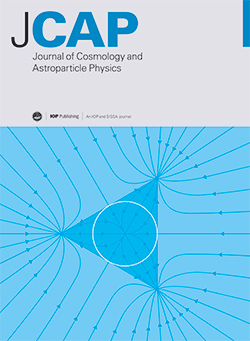Gravitational waves from dark binaries with finite-range dark forces
IF 5.3
2区 物理与天体物理
Q1 ASTRONOMY & ASTROPHYSICS
Journal of Cosmology and Astroparticle Physics
Pub Date : 2025-03-06
DOI:10.1088/1475-7516/2025/03/010
引用次数: 0
Abstract
This paper calculates the stochastic gravitational wave background from dark binaries with finite-range attractive dark forces, complementing previous works which consider long-range dark forces. The finiteness of the dark force range can dramatically modify both the initial distributions and evolution histories of the binaries. The generated gravitational wave spectrum is enhanced in the intermediate frequency regime and exhibits interesting “knee” and “ankle” features, the most common of which is related to the turn on of the dark force mediator radiation. Other such spectral features are related to changes in the binary merger lifetime and the probability distribution for the initial binary separation. The stochastic gravitational wave background from sub-solar-mass dark binaries is detectable by both space- and ground-based gravitational wave observatories.求助全文
约1分钟内获得全文
求助全文
来源期刊

Journal of Cosmology and Astroparticle Physics
地学天文-天文与天体物理
CiteScore
10.20
自引率
23.40%
发文量
632
审稿时长
1 months
期刊介绍:
Journal of Cosmology and Astroparticle Physics (JCAP) encompasses theoretical, observational and experimental areas as well as computation and simulation. The journal covers the latest developments in the theory of all fundamental interactions and their cosmological implications (e.g. M-theory and cosmology, brane cosmology). JCAP''s coverage also includes topics such as formation, dynamics and clustering of galaxies, pre-galactic star formation, x-ray astronomy, radio astronomy, gravitational lensing, active galactic nuclei, intergalactic and interstellar matter.
 求助内容:
求助内容: 应助结果提醒方式:
应助结果提醒方式:


